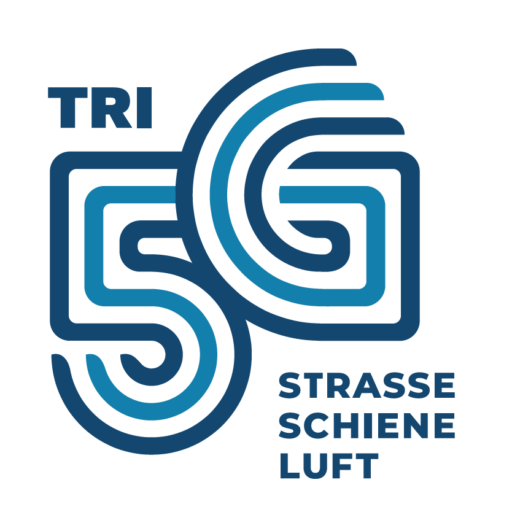Work packages
The project is divided into 4 work packages, which examine the key topics of “Connected Driving”, “Automated Drones” and “Tracking, Monitoring, IoT & Maintenance”. The study focuses on 14 use cases that test the diverse potential of 5G technology in the northern Leipzig area (see project area).

Work package 0 – Project management, coordination, public relations & transfer
The tasks of project management, coordination of associated and external partners, public relations and transfer work are bundled in WP 0. The work of the individual work packages will be coordinated by the consortium leaders in collaboration with the work package leaders. Public relations work will essentially be based on two pillars. On the one hand, the consortium is planning measures as part of the 5x5G innovation competition, also together with other funded projects in the program. Secondly, the Leipzig location is to be strengthened. The aim is to achieve the best possible and economically and socially sustainable results. The transfer work is also coordinated by WP 0. The aim is a coordinated approach between the project partners, essentially the research institutions and large companies. However, the research results of the participating SMEs should also be efficiently disseminated via the publishing research institutions and the large companies active in standardization.
Work package 1 – Tri5G use cases
In WP 1, the Tri5G use cases will be clustered and developed in three cross-partner working groups “Connected Driving”, “Automated Drones” and “Tracking, Monitoring, IoT & Maintenance”. At the beginning, all use cases and their requirements (for 5G transmission, the 5G network, network operation, the necessary MEC functionalities, etc.) will be analyzed, defined and technical specifications drawn up. Based on this, the appropriate demonstration scenarios, test areas, dependencies, schedules and implementation efforts are coordinated and defined. This is followed by the detailed preparation and implementation of the demonstrators, which are then tested. In this testing phase, the applications are examined using the demonstrators, measurements are carried out, measurement/performance results are analyzed and, if necessary, optimizations are made and further tests are carried out. Finally, the approaches pursued and the tests carried out are evaluated. The findings will be processed as required for the purposes of standardization or, if necessary, regulation.
Work package 1.1 – Connected driving
In WP 1.1, use cases from the field of mobility are being worked on. The focus is on the automation and remote control of driving functions as well as the networking of vehicles with a central infrastructure via 5G. The use cases cover various communication channels between vehicles and infrastructure (Car2Car, Car2Infrastructure). The focus here is on the fact that the transmissions do not take place directly, e.g. from one vehicle to another, but are always cellular/cloud-based via the mobile network. For the area of vehicle control, this should eliminate range problems and achieve a much more comprehensive integration of vehicles into the control system through networking with traffic control centers. The intelligent selection of communication channels, the available computing capacities (in the vehicle, MEC, central infrastructure) and the integration into the infrastructure is also relevant for use cases in the field of emergency care by rescue services. The project will focus on telemedical use cases and the processing of complex video and biosignals in order to provide the emergency services with optimum technical support on site. As part of the activities, requirements are to be defined, suitable hardware identified and evaluations and test scenarios planned and implemented. For both aspects, the project aims to develop a secure and dedicated
Work package 1.2 – Automated drones
The aim of WP 1.2 is to analyze the suitability and suitability of 5G technologies for automated data acquisition using drones. The focus is on AI-supported real-time data processing of data (e.g. images) from drone overflights. In this context, the drones represent a carrier system that is used to capture and transmit camera and sensor data. As part of the WP, the use cases of fence monitoring, inspection of aircraft, airport buildings and infrastructure facilities / reconnaissance of security incidents in the airport area, as well as the use of autonomous drones for fire reconnaissance are to be tested with the partners. Among other things, the ability of drones to transmit real-time data via 5G, the requirements for network coverage and parameters for automated drone flight, the necessary server infrastructure for data processing of heterogeneous sensor data, as well as AI/ML methods and models for real-time data analysis are being investigated. The results, particularly in the area of data processing, can be transferred to other use cases in WP 1.
Work package 1.3 – Tracking, Monitoring, IoT & Maintenance
One of the aims of WP 1.3 is to investigate whether the 5G NR mobile communications standard is suitable for outdoor real-time position detection. Application scenarios include, for example, the detection of loaded means of transport on the airport apron in order to achieve efficient loading and unloading of air freight containers. The data recorded and transmitted via 5G can be retrieved in the target image in an IoT platform and serve as the basis for operational decisions. Comprehensive network coverage and the availability of data for several thousand sensors play a decisive role here in order to obtain the position data determined by GPS receivers, the status of the means of transport and the identification of the load carriers. Furthermore, WP 1.3 investigates repairs and maintenance of machines (Smart Glass Remote Maintenance) using visual communications. The transmission and communication between people at different locations using augmented reality is also being tested. All results and findings from WP 1.3 will be incorporated into WP 2 Data Services and can be further processed there.
Work package 2 – Data services
The analysis and definition of requirements for data services and their security, particularly with regard to cross-operator aspects, are an important building block for the realization of inter-campus use cases that require continuous, stable, highly reliable and secure communication. Communication and the exchange of information between the various partners/logistics companies must comply with strict IT security and data protection regulations according to the need-to-know principle. Due to many open questions and a lack of standards, a high proportion of research is to be expected in this AP.
to be expected. Using the example of selected use cases from WP1, fundamental questions on inter-operator aspects are to be defined, their consideration in tests planned and piloting in the project prepared in suitable Tri5G test areas. In addition, scenarios are to be investigated in which suppliers, service providers and external companies are to cooperate with each other and with their customers on their customers’ premises.
Work package 3 – 5G network, MEC & operation
In WP3, all requirements for the 5G network and data services, the Mobile Edge Computing (MEC) processing services and the operation of the network as well as the MEC components (also across network operators) collected in WPs 1+2 are collected, evaluated across applications and synergies identified. On this basis, quality-of-service (QoS) profiles are then created for all relevant/examined Tri5G use cases, implementation strategies are designed and suitable network configurations are derived for the respective test areas and demonstration scenarios. These profiles are used to describe Tri5G network slices and “Tri5G Specialized Industrial Services”. Based on these results, the commissioned 5G network operator, in coordination with the consortium, should then define the necessary network slices for mapping and demonstrating the “Tri5G Specialized Industrial Services” for the applications, test areas, demos and, if necessary, standardization specified in WP 1 and implement them for the test purposes in the Tri5G network.
Work package 4 – End devices & integration
In order to test the Tri5G use cases in realistic scenarios, the various end devices or test vehicles (such as drones, buses, truck trailers, rescue vehicles, etc.) must be enabled to be integrated into the 5G network by integrating radio modules in a suitable form (e.g. as a telemetry unit with vehicle interfaces). In WP 4, all requirements for connectivity solutions/devices on the terminal side are therefore to be
devices along the lines of the results from WP 1 and to develop a technical specification for embedded solutions. In addition, all radio units available at the time of the project on the terminal or test carrier side are to be examined with regard to their scope of performance for the test purposes in Tri5G, suitable integration variants are to be worked out and the necessary integration work is to be planned along the demonstration scenarios defined in WP 1. On the other hand, software applications (apps) for the end devices must be developed and/or integrated in order to support the use cases and make testing possible. The integration work required to use MEC resources for the demos must also be planned and carried out.

